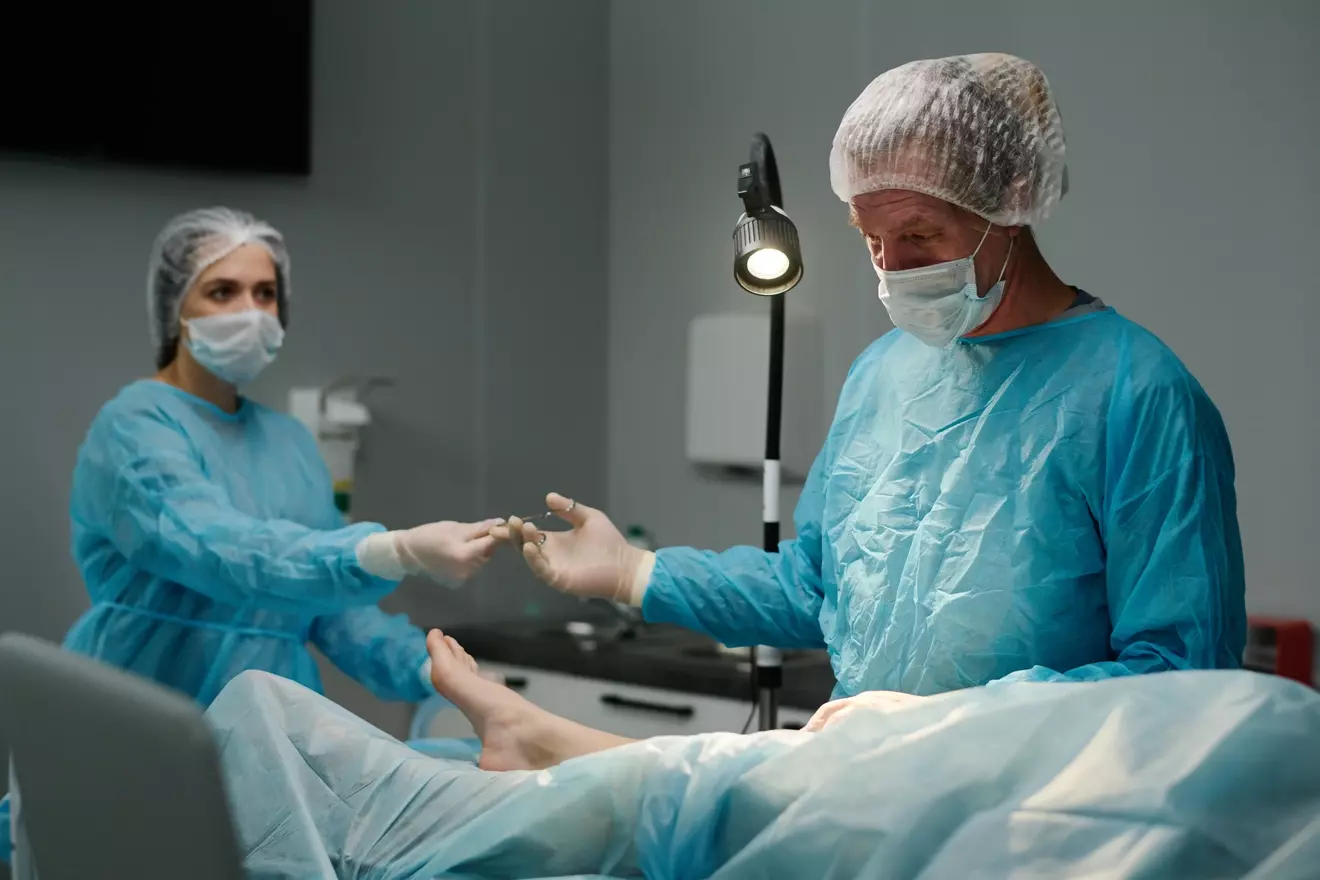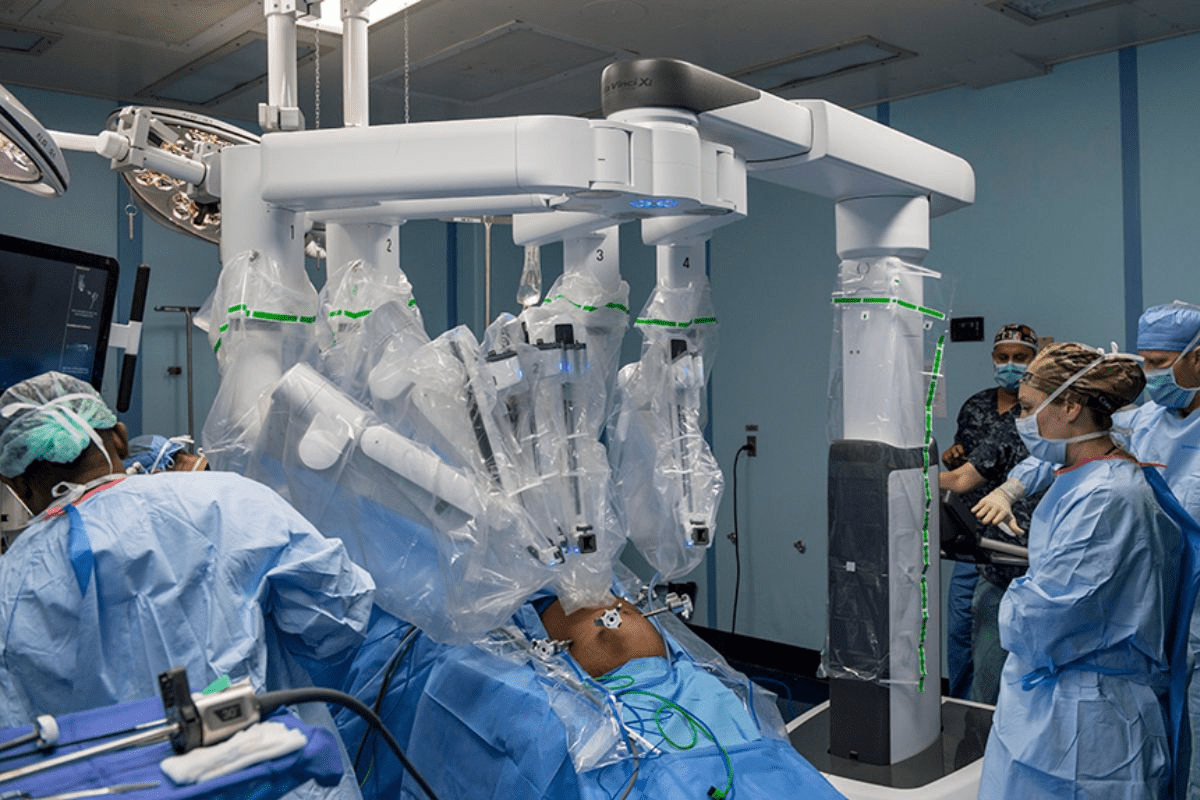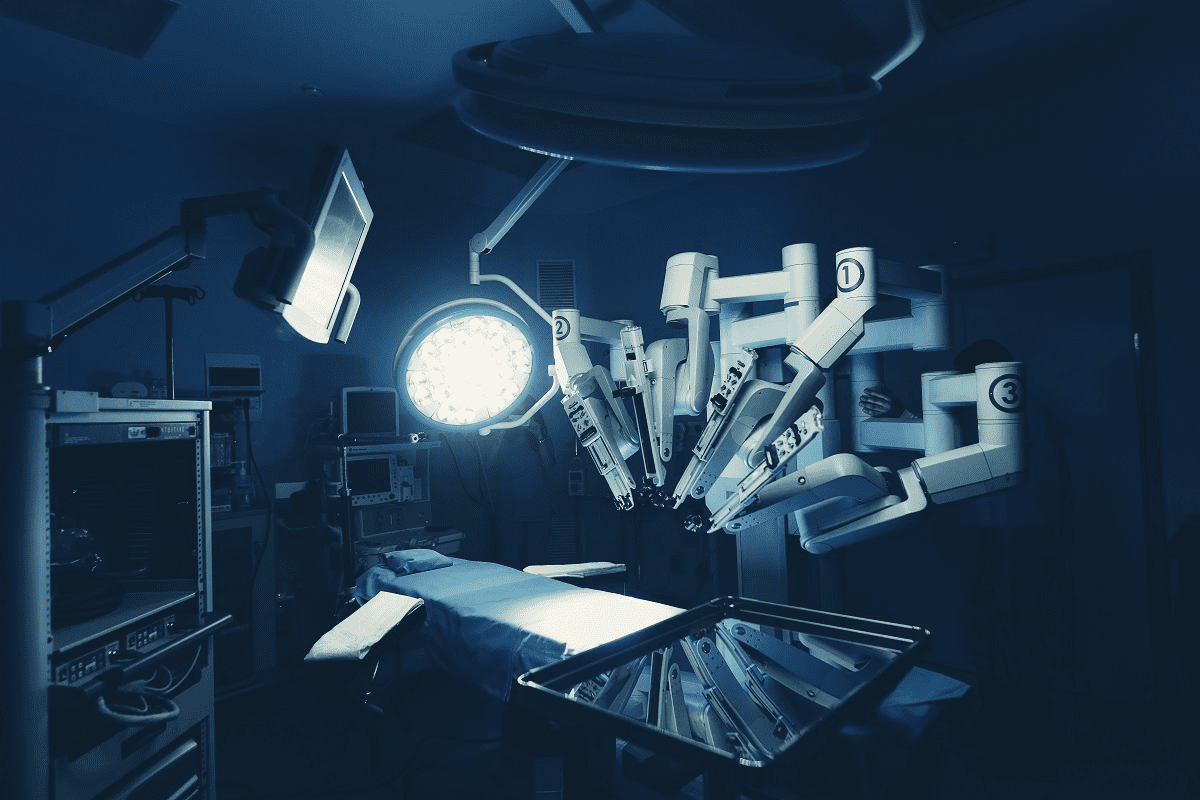Last Updated on November 27, 2025 by Bilal Hasdemir
Did you know a PET scan uses a small amount of radioactive material? This material stays in your body for a while. PET scans are a key tool for doctors to find and treat many health issues. Getting a PET scan can make you worry about radiation.
The time radiation stays in your body after a PET scan depends on a few things. Usually, the radiation levels go down as the material breaks down and leaves your body. We’ll explain what you can expect and what affects how long radiation lasts after a PET scan.
Key Takeaways
- The radiation from a PET scan decreases over time as the radioactive material decays.
- Factors such as the type and amount of radioactive material used can influence radiation duration.
- Understanding the PET scan radiation timeline can help alleviate concerns about radiation exposure.
- We are committed to providing you with complete support during your medical journey.
- Our team is dedicated to delivering top-notch healthcare services with care and skill.
The Basics of PET Scan Technology
PET scan technology is at the forefront of medical diagnostics. It lets doctors see inside the body with great detail. We use PET scans to find and manage many health issues. They show how active different parts of the body are.
What Is a PET Scan and How Does It Work?
A PET scan is a test that uses a special sugar molecule to find diseases. It injects a tiny bit of radioactive sugar into the body. This sugar goes to areas that are very active, like cancer cells.
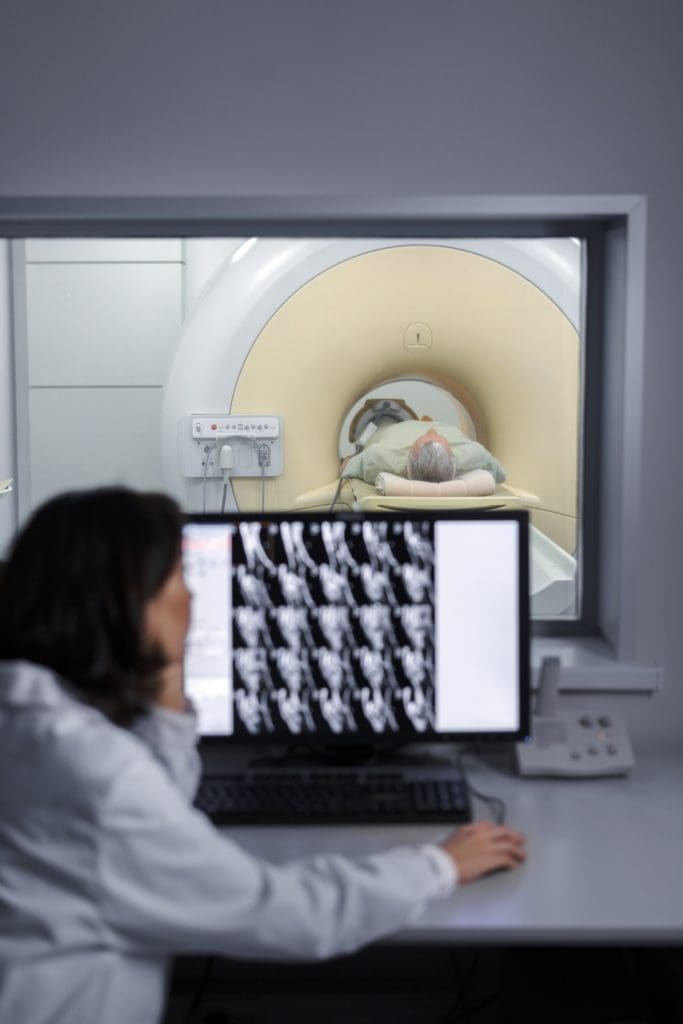
The PET scanner picks up signals from this sugar. It makes detailed pictures of what’s inside the body.
The scan works by finding where positrons, tiny particles, meet electrons. When they do, they release energy. The scanner catches this energy and makes detailed images of the body’s activity.
Types of Medical Conditions Diagnosed with PET Scans
PET scans are great for finding and managing many health issues. They are used for:
- Cancer diagnosis and staging
- Neurological disorders, such as Alzheimer’s disease
- Cardiovascular disease assessment
The table below shows how PET scans help with different health problems:
| Medical Condition | PET Scan Application |
| Cancer | Diagnosis, staging, and monitoring treatment response |
| Neurological Disorders | Diagnosing conditions like Alzheimer’s and Parkinson’s |
| Cardiovascular Disease | Assessing heart function and viability of heart tissue |
Learning about PET scan technology helps us see its importance in medicine. It’s a key tool for better health care.
Radiation and Radiopharmaceuticals in PET Imaging
Radiopharmaceuticals are key in PET scans. They emit radiation that helps create images of the body’s metabolic activities. These compounds target specific processes, allowing us to see how the body works.
These substances offer a unique view into the body’s metabolic processes. By understanding how they work, we can learn a lot about diagnosing and treating diseases.
Types of Radioactive Tracers Used
PET imaging uses different radioactive tracers for various purposes. The most common is Fluorodeoxyglucose (FDG), which builds up in areas with high activity, like tumors.
Other tracers focus on different bodily functions. For example, some bind to specific receptors or cells. The right tracer depends on the condition being studied.
| Tracer | Application | Target |
| FDG (Fluorodeoxyglucose) | Cancer, infection, inflammation | Glucose metabolism |
| Flortaucipir | Alzheimer’s disease | Tau protein |
| Florbetapir | Alzheimer’s disease | Amyloid plaques |
How Radioisotopes Travel Through Your Body
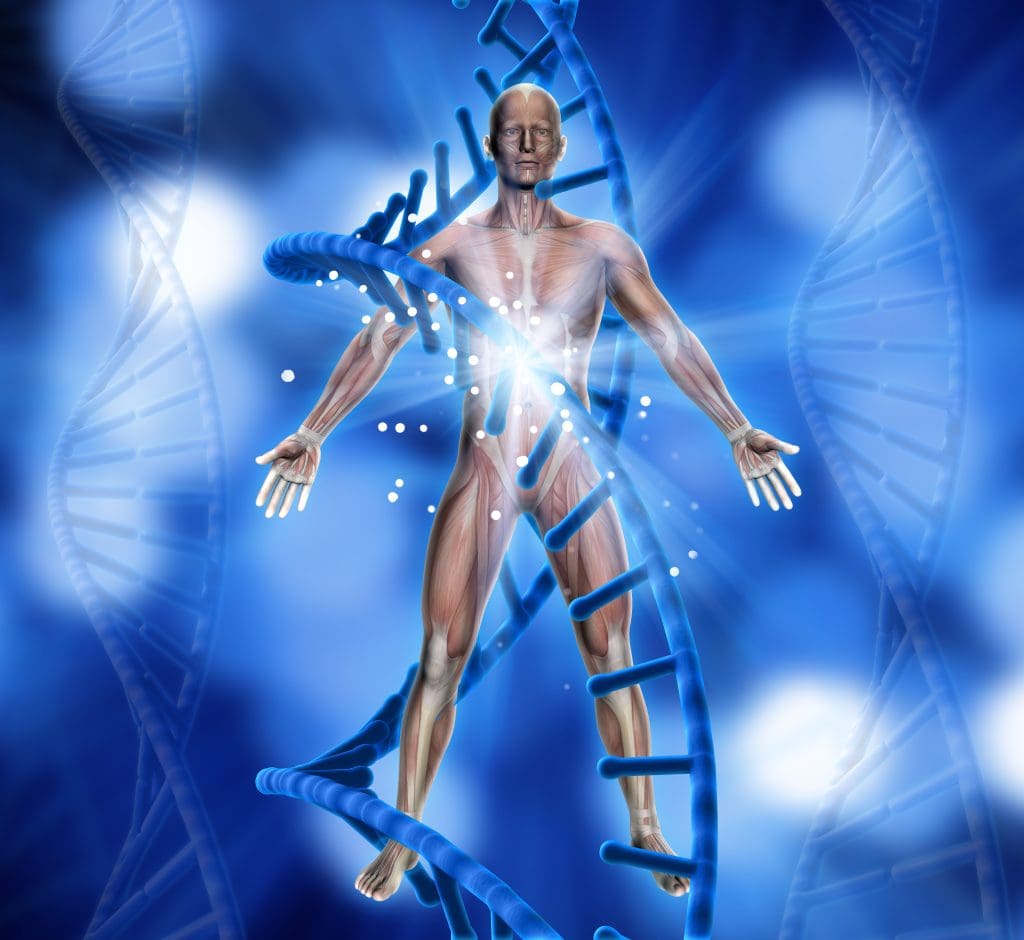
After being given, radiopharmaceuticals spread through the body. They build up in areas of interest based on their chemical properties. The radioactive part of these tracers emits positrons, which create gamma rays detected by the PET scanner.
The speed at which these tracers are taken up and removed varies. It depends on the tracer and the person’s metabolic rate. Knowing this helps us understand PET scan results better.
We keep learning about how radioisotopes move through the body. This helps improve PET imaging and care for patients.
Preparing for a PET Scan: What to Know
To get the most out of your PET scan, following specific pre-scan instructions is key. Proper preparation ensures the scan’s success and accurate results. We’re here to guide you through what to expect and how to prepare.
Pre-Scan Instructions and Restrictions
Before your PET scan, there are guidelines you need to follow. These are to ensure your safety and the scan’s accuracy.
- Fasting Requirements: You may need to fast for 4 to 6 hours before the scan. This can vary based on the scan type.
- Dietary Restrictions: Avoid sugary foods and drinks before the scan. We may also ask you to limit carbs for a day or two.
- Medication: Tell your doctor about any medications you’re taking. Some may need to be adjusted or stopped before the scan.
- Clothing: Wear comfortable, loose-fitting clothing. Avoid metal items like jewelry, zippers, or clips as they can interfere with the scan.
| Pre-Scan Requirement | Description |
| Fasting | Avoid eating and drinking for 4-6 hours before the scan. |
| Dietary Restrictions | Limit sugary foods and carbohydrates. |
| Medication Management | Inform your doctor about your current medications. |
| Clothing | Wear loose, metal-free clothing. |
The Injection Process and What to Expect
During a PET scan, a radioactive tracer is injected into your body. It’s given through a vein in your arm. The injection is quick and may cause a slight pinch or stinging sensation.

After the injection, you’ll wait for about an hour for the tracer to be absorbed. You’ll rest in a quiet room. It’s important to stay relaxed and remain as motionless as possible.
Once the waiting period is over, you’ll go to the PET scanner. The scan is painless and takes about 30 minutes to an hour. Our team will be with you to ensure your comfort and safety.
After PET Scan How Long Are You Radioactive?

Knowing how long you stay radioactive after a PET scan is important. This is because many people worry about it. Several things can affect how long you stay radioactive.
Average Radioactive Duration in the Body
The time radiation stays in your body after a PET scan can vary. The tracer used in PET scans has a short half-life. For example, Fluorodeoxyglucose (FDG), a common tracer, has a half-life of about 110 minutes.
Factors That Affect How Quickly Radiation Leaves Your System
Many things can affect how fast radiation leaves your body. These include how much water you drink, your metabolic rate, and how well your kidneys work.
- Hydration Level: Drinking lots of water helps get rid of the tracer faster.
- Metabolic Rate: People with a faster metabolism might clear the tracer quicker.
- Kidney Function: Because the tracer goes out through urine, your kidneys play a big role in how fast it leaves.
| Factor | Influence on Radiation Clearance |
| Hydration Level | Drinking a lot of water helps clear it faster |
| Metabolic Rate | A faster metabolism means quicker processing of the tracer |
| Kidney Function | Good kidney function helps get rid of the tracer quickly |
“Proper hydration is key to reducing the radiation exposure period.” Drinking plenty of water after the scan is a simple way to cut down on how long you stay radioactive.
By knowing these factors and taking steps like staying hydrated, patients can reduce how long they stay radioactive after a PET scan.
The Science of Radioactive Half-Life
Radioactive half-life is key in knowing how long PET scan radiation stays in the body. It shows how long it takes for half of the radioactive atoms to decay. This is important for the safety and success of PET scans.
Understanding FDG (Fluorodeoxyglucose) Half-Life
FDG is a common PET scan radiopharmaceutical. It has a half-life of about 110 minutes. This means half of the FDG in the body decays every 110 minutes. This short half-life helps in getting good images without too much radiation.
To understand FDG decay better, let’s look at it over time:
| Time (minutes) | FDG Remaining (%) |
| 0 | 100 |
| 110 | 50 |
| 220 | 25 |
| 330 | 12.5 |
Clearance Rates of Common PET Scan Isotopes
Isotopes have different half-lives and how fast they clear from the body. For example, FDG has a 110-minute half-life, while Oxygen-15 lasts about 2 minutes. Knowing these rates helps manage radiation exposure.
Here’s a look at the half-lives of some PET scan isotopes:
| Isotope | Half-Life |
| Fluorine-18 (FDG) | 110 minutes |
| Oxygen-15 | 2 minutes |
| Nitrogen-13 | 10 minutes |
| Rubidium-82 | 1.27 minutes |
The choice of isotope depends on the scan’s purpose and how long it needs to last. Knowing half-lives and clearance rates helps doctors make PET scans safer and more effective.
Radiation Exposure Levels from PET Procedures
The amount of radiation from PET procedures is a big deal for patients and doctors. It’s key to know the benefits and risks of radiation when getting a PET scan.
Comparing PET Scan Radiation to Daily Environmental Exposure
PET scans use radioactive tracers that emit radiation. The radiation from a PET scan is usually the same as or a bit more than what we get from the environment every day. On average, we get about 3 millisieverts (mSv) of background radiation yearly. A PET scan might expose you to 4 to 7 mSv, depending on the tracer and dose.
Think of it like this: a PET scan’s radiation is similar to what we get in 1 to 2 years of background radiation. But, PET scan radiation is more intense and lasts for a shorter time than background radiation.
Cumulative Effects of Multiple Scans Over Time
There’s a worry about the buildup of radiation from PET scans, mainly for those who have many scans. Even though a single PET scan’s dose is low, getting many scans can increase the risk of cancer over time.
But, the benefits of PET scans in diagnosing and treating serious health issues are often greater than the risks. Doctors try to balance the need for scans with the risk of radiation. They aim to use the least amount of radiation needed to get the most information.
It’s important for patients to talk to their doctors about any worries about radiation. They should understand why the scan is needed, how much radiation it involves, and if there are other options.
Post PET Scan Care Instructions
After a PET scan, it’s key to follow certain care steps. This helps your body get rid of the radioactive tracer quickly. We’re here to help you through this time, making sure you’re safe and the tracer is removed.
Immediate Actions After Your Scan
Right after your PET scan, there are steps you can take. Drink lots of water to help flush out the tracer. Also, void your bladder often to lower radiation exposure to your bladder and nearby areas.
We also suggest:
- Avoid close contact with pregnant women and young children for a few hours
- Shower or bathe to remove any radioactive tracer from your sweat
- Wear loose, comfortable clothes and don’t wear the same ones for too long
Hydration Requirements for Faster Radiation Clearance

Drinking plenty of fluids is very important. Drinking lots of water helps get rid of the tracer through urination. We recommend drinking at least 8-10 glasses of water or other fluids in the 24 hours after your PET scan.
Drinking fluids with electrolytes, like coconut water or sports drinks, is also good. They help keep your body’s electrolyte balance. But, avoid caffeinated and sugary drinks as they can cause dehydration.
Safety Precautions Following Your PET Scan
After a PET scan, it’s important to follow safety guidelines to protect those around you from radiation. We know getting a PET scan can be scary. It’s key to take steps to keep yourself and others safe.
Guidelines for Interacting with Others
After a PET scan, it’s best to keep a distance from others, like kids and pregnant women. Here’s what we suggest:
- Stay away from people, mainly in the first few hours after the scan.
- Be careful around pregnant women and kids, as they are more at risk from radiation.
- Listen to your healthcare provider or the PET scan place for specific rules.
These steps help lower the risk of radiation to others. It’s very important to follow these tips to keep everyone safe.
Special Considerations for Vulnerable Populations
Some groups, like pregnant women, kids, and people with weak immune systems, need extra care. Here’s what we advise:
- Tell your doctor about your PET scan if you’re pregnant or breastfeeding.
- Be extra careful to avoid being close to vulnerable people for the suggested time.
- Follow any extra rules your doctor gives you based on your situation.
By being careful, you can greatly lower the risk of radiation to those around you. Our goal is to ensure the process is safe and comfortable.
PET Scan Accuracy for Different Conditions
Knowing how accurate PET scans are is key to seeing their value in diagnosing diseases. These scans are a big deal in nuclear medicine. They give us important info for diagnosing, staging, and tracking diseases.
How Accurate Is a PET Scan for Alzheimer’s?
PET scans are a big help in spotting Alzheimer’s, even in its early stages. They can spot brain changes that show Alzheimer’s. The scans are pretty accurate, with a success rate of 80% to over 90%.
Here are some important points about PET scans and Alzheimer’s:
- Early Detection: PET scans can find brain changes early, before big cognitive drops happen.
- Differential Diagnosis: They help tell Alzheimer’s apart from other dementias.
- Monitoring Progression: PET scans track how the disease gets worse over time.
Reliability of PET Scans in Cancer Detection
PET scans are a big deal in cancer care for finding, staging, and checking how treatments work. They’re really good at spotting cancer, thanks to being used with CT scans (PET-CT). How well PET scans work depends on the cancer type, its stage, and the used radiopharmaceutical.
Here are some key points about PET scans and cancer:
- Cancer Staging: PET scans are great at figuring out how far cancer has spread.
- Treatment Monitoring: They check if a tumor is responding to treatment, helping adjust plans.
- Recurrence Detection: They’re good at finding cancer coming back, often before other scans.
In short, PET scans are super accurate for diagnosing diseases like Alzheimer’s and cancer. They’re super useful in medicine because they show how the body’s working.
PET CT Scans for Cancer Diagnosis
PET CT scans have changed how we diagnose cancer. They mix CT’s detailed images with PET’s metabolic info. This combo gives a full view of the body’s inner workings and how they work, helping spot and stage cancer accurately.
PET CT Scan for Breast Cancer Detection
PET CT scans are key for breast cancer diagnosis and planning. They’re not the first choice, but they’re great for seeing how far cancer has spread. They help us see how active breast tumors are, which helps decide treatment.
| Application | Benefits | Limitations |
| Breast Cancer Detection | Accurate staging, assessment of metastasis | Not suitable for early-stage detection, limited sensitivity for small tumors |
| Early-Stage Cancer Detection | Provides metabolic information, helps in assessing tumor aggressiveness | May not detect very small or slow-growing tumors |
Would a PET Scan Show Early-Stage Cancers?
PET scans can spot early cancers by showing where metabolism is off. But, how well they work depends on the cancer type, where it is, and the PET scan’s quality. They’re best for cancers that use a lot of energy, even in the early stages.
Key Considerations:
- The sensitivity of PET scans can vary depending on the cancer type.
- Early-stage cancers with low metabolic activity might not be detected.
- PET CT scans are more effective when used in conjunction with other diagnostic tools.
Frequency and Timing of PET Scans
PET scans are key in fighting cancer. But how often should they be done? The answer depends on the cancer type, stage, and the patient’s health. It also depends on the treatment plan.
How Often Do Cancer Patients Get PET Scans?
Cancer patients get PET scans at different times. The frequency of PET scans varies a lot. For example, those with fast-growing cancers might need scans more often.
- PET scans help diagnose and stage cancer.
- They check how well cancer responds to treatment.
- They also check for cancer return after treatment.
The time between scans depends on many things. This includes the cancer type, treatment plan, and how well the patient is doing. For example, someone getting chemotherapy might have scans before, during, and after treatment.
Optimal Scheduling Between Multiple Scans
Getting the timing right between scans is important. It helps keep an eye on the disease without too much radiation. Several factors affect this, like how fast the cancer grows and the patient’s health.
| Cancer Type | Typical PET Scan Frequency | Factors Influencing Frequency |
| Aggressive Cancers (e.g., certain lymphomas) | Every 2-3 months | Rapid disease progression, response to intensive chemotherapy |
| Slow-growing Cancers (e.g., some prostate cancers) | Every 6-12 months | Slow disease progression, monitoring for treatment response |
Healthcare providers plan PET scans carefully. They aim to improve treatment results while keeping radiation low. It’s a balance that meets each patient’s unique needs.
Addressing Common Radiation Concerns
PET scans are used a lot, but people worry about radiation safety. It’s key to know the risks and how to reduce them as we keep using this tool.
Does a PET Scan Cause Cancer?
Many worry if PET scan radiation can lead to cancer. High radiation levels can raise cancer risk. But, PET scans use a low dose.
Studies show mixed results on long-term risks. Some say there’s a slight increase in cancer risk. Others find the risk very small.
It’s important to think about the risks and benefits of PET scans. For many, the scan’s info is very helpful. It can help doctors make better treatment plans.
Long-term Health Effects of Diagnostic Radiation
There are other health risks to consider, like genetic changes and more disease risk. But, PET scans aim to use the least radiation needed for good results.
We keep watching and studying the effects of radiation. Patients can help by following care tips and talking to their doctors.
Knowing the risks and benefits helps us decide when to use PET scans. This way, we can make better choices in medicine.
What Happens After Receiving Your PET Scan Results
Getting your PET scan results is a big step in your health journey. We know it can be tough to wait and understand them. But we’re here to help you through it.
Understanding Your Scan Report
Your PET scan report shows what your scan found. It talks about where the special medicine used in the scan went and any unusual activity. It’s best to talk about it with your doctor to really get what it means for you.
The report might point out areas that look different, like tumors or inflammation. It might also compare these to scans you had before. Remember, a PET scan is just one tool. Your doctor will look at all your tests and health history to understand your results.
What Is the Next Step After a PET Scan?
What happens next depends on what your scan found. If you need more tests or treatment, your doctor will talk about your options. This could mean more scans, biopsies, or starting treatment.
If your scan looks good or shows things are getting better, your doctor might want to check again later. It’s important to do what your doctor says and ask any questions you have.
| Result Type | Typical Next Steps | Additional Actions |
| Abnormal Activity Detected | Further investigation or treatment planning | Additional imaging or biopsy |
| Normal or Improved Results | Monitoring or follow-up scans | Lifestyle adjustments or continued treatment |
Understanding your PET scan results and what comes next can feel overwhelming. But with your healthcare team’s help, you can feel more confident. We’re here to support you every step of the way.
Special Considerations for Different Patient Groups
PET scan procedures vary greatly. They need careful thought based on the patient’s age, health, and more. We must consider each patient’s unique needs to ensure safety and success.
Radiation Safety for Pediatric Patients
Children are more at risk from radiation because their bodies are growing and they have a long life ahead. So, we must be extra careful when doing PET scans on kids.
To lower radiation, we use the least amount of radioactive material needed for clear images. We also pick the right radioactive material and adjust the dose based on the child’s weight and age.
Key Considerations for Pediatric PET Scans:
- Use of pediatric-specific protocols
- Adjustment of radiopharmaceutical dose based on weight
- Careful monitoring during and after the scan
Considerations for Elderly Patients and Those with Compromised Immunity
Elderly and immunocompromised patients need extra care because they might be more sensitive to radiation and other risks. We check their health and adjust the scan process as needed.
For older patients, we look at their kidney function and drug interactions when giving radioactive materials. For those with weak immune systems, we try to avoid infections during the scan.
| Patient Group | Special Considerations |
| Pediatric Patients | Adjusted radiopharmaceutical dose, pediatric-specific protocols |
| Elderly Patients | Assessment of renal function, drug interactions |
| Patients with Compromised Immunity | Precautions against infection, careful health assessment |
By customizing our approach for each patient group, we make PET scans safe and effective. This personalized care is key for accurate diagnoses and good treatment results.
Advances in Reducing Radiation Exposure
Recent PET technology advancements have greatly lowered radiation for patients. We aim to use these innovations for safer care.
New PET Technologies with Lower Radiation Doses
New PET technologies have been key in cutting down radiation. High-sensitivity PET scanners can spot smaller amounts of radiotracer, needing less dose. Also, better image reconstruction algorithms improve image quality, allowing for lower doses without losing accuracy.
Digital PET scanners are another big step forward. They give better resolution and sensitivity than old systems. This means patients can get high-quality images at lower doses, making scans safer.
Alternative Diagnostic Methods for Radiation-Sensitive Patients
For those very sensitive to radiation, like kids or those needing many scans, new methods are being looked into. Ultrasound or MRI are being used more as first choices. These don’t use ionizing radiation, making them safer for these groups.
We’re also checking out low-dose PET protocols for different patients. By fine-tuning scan settings and using new tech, we aim to cut radiation while keeping scans effective.
| Diagnostic Method | Radiation Exposure Level | Patient Suitability |
| Traditional PET Scan | High | General Patients |
| Low-Dose PET Scan | Moderate | Radiation-Sensitive Patients |
| Ultrasound | None | Pediatric, Pregnant Patients |
| MRI | None | Patients with Specific Conditions |
By using these new methods and technologies, we aim to make care safer and more effective. Our goal is to offer top-notch healthcare, supporting patients from around the world.
Conclusion: Weighing the Benefits Against Radiation Exposure
As we wrap up our talk on PET scans, it’s key to look at both sides. PET scans have changed medicine a lot. They help doctors find and track diseases like cancer, brain issues, and heart problems.
PET scans are very good at spotting diseases and helping decide treatments. But, we can’t ignore the risks of radiation. Knowing how long radiation stays in the body is important.
Patients need to know about the risks and benefits of PET scans. Talking to doctors is vital. This way, patients can choose what’s best for them, balancing risks and benefits.
FAQ
How long does radiation from a PET scan stay in your body?
The radioactive material from a PET scan stays in your body for a few hours. This time can vary based on the type of radiopharmaceutical and how well you hydrate.
What is a PET scan and how does it work?
A PET scan is a test that uses a small amount of radioactive material. It’s injected into the body to find areas of high activity, like tumors. This helps doctors diagnose and monitor health conditions.
How accurate is a PET scan for Alzheimer’s disease?
PET scans can help spot Alzheimer’s by showing abnormal brain activity. They’re not the only test needed, but they’re very helpful when used with other tests and doctor’s opinions.
Are PET scans reliable for cancer detection?
Yes, PET scans are very good at finding and tracking cancer. They show where tumors are and how well treatments are working.
How often do cancer patients get PET scans?
Cancer patients might get PET scans often or rarely, depending on their cancer type and treatment plan. It all depends on their specific situation.
Does a PET scan cause cancer?
The chance of getting cancer from a PET scan is very low. But, any radiation carries some risk. The benefits of using PET scans for serious health issues usually outweigh the risks.
What should I do after a PET scan?
After a PET scan, drink lots of water to get rid of the radioactive material. Also, follow any instructions from your healthcare team.
How long are you radioactive after a PET scan?
How long you stay radioactive after a PET scan depends on the radiopharmaceutical’s half-life. Usually, it’s just a few hours. But, it’s important to follow instructions to avoid exposing others.
Can a PET CT scan detect breast cancer?
Yes, PET CT scans can find and track breast cancer. They’re great for seeing if cancer has spread to other parts of the body.
What are the safety precautions following a PET scan?
After a PET scan, stay hydrated, avoid close contact with pregnant women and young kids for a bit, and follow your healthcare provider’s advice.
Are there alternative diagnostic methods for radiation-sensitive patients?
Yes, there are other tests for patients who don’t want to get a PET scan. MRI or ultrasound might be options, depending on what you need checked.
What happens after receiving your PET scan results?
Your healthcare provider will talk to you about your PET scan results. They’ll explain what they mean and what to do next.
How can radiation exposure from PET scans be minimized?
To reduce radiation from PET scans, doctors use the least amount of radioactive material needed. Patients should also carefully follow post-scan instructions.
How long does radiation from a PET scan stay in your body?
The radioactive material from a PET scan stays in your body for a few hours. This time can vary based on the type of radiopharmaceutical and how well you hydrate.
What is a PET scan and how does it work?
A PET scan is a test that uses a small amount of radioactive material. It’s injected into the body to find areas of high activity, like tumors. This helps doctors diagnose and monitor health conditions.
How accurate is a PET scan for Alzheimer’s disease?
PET scans can help spot Alzheimer’s by showing abnormal brain activity. They’re not the only test needed, but they’re very helpful when used with other tests and doctor’s opinions.
Are PET scans reliable for cancer detection?
Yes, PET scans are very good at finding and tracking cancer. They show where tumors are and how well treatments are working.
How often do cancer patients get PET scans?
Cancer patients might get PET scans often or rarely, depending on their cancer type and treatment plan. It all depends on their specific situation.
Does a PET scan cause cancer?
The chance of getting cancer from a PET scan is very low. But, any radiation carries some risk. The benefits of using PET scans for serious health issues usually outweigh the risks.
What should I do after a PET scan?
After a PET scan, drink lots of water to get rid of the radioactive material. Also, follow any instructions from your healthcare team.
How long are you radioactive after a PET scan?
How long you stay radioactive after a PET scan depends on the radiopharmaceutical’s half-life. Usually, it’s just a few hours. But, it’s important to follow instructions to avoid exposing others.
Can a PET CT scan detect breast cancer?
Yes, PET CT scans can find and track breast cancer. They’re great for seeing if cancer has spread to other parts of the body.
What are the safety precautions following a PET scan?
After a PET scan, stay hydrated, avoid close contact with pregnant women and young kids for a bit, and follow your healthcare provider’s advice.
Are there alternative diagnostic methods for radiation-sensitive patients?
Yes, there are other tests for patients who don’t want to get a PET scan. MRI or ultrasound might be options, depending on what you need checked.
What happens after receiving your PET scan results?
Your healthcare provider will talk to you about your PET scan results. They’ll explain what they mean and what to do next.
How can radiation exposure from PET scans be minimized?
To reduce radiation from PET scans, doctors use the least amount of radioactive material needed. Patients should also carefully follow post-scan instructions.


